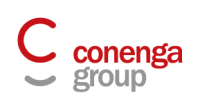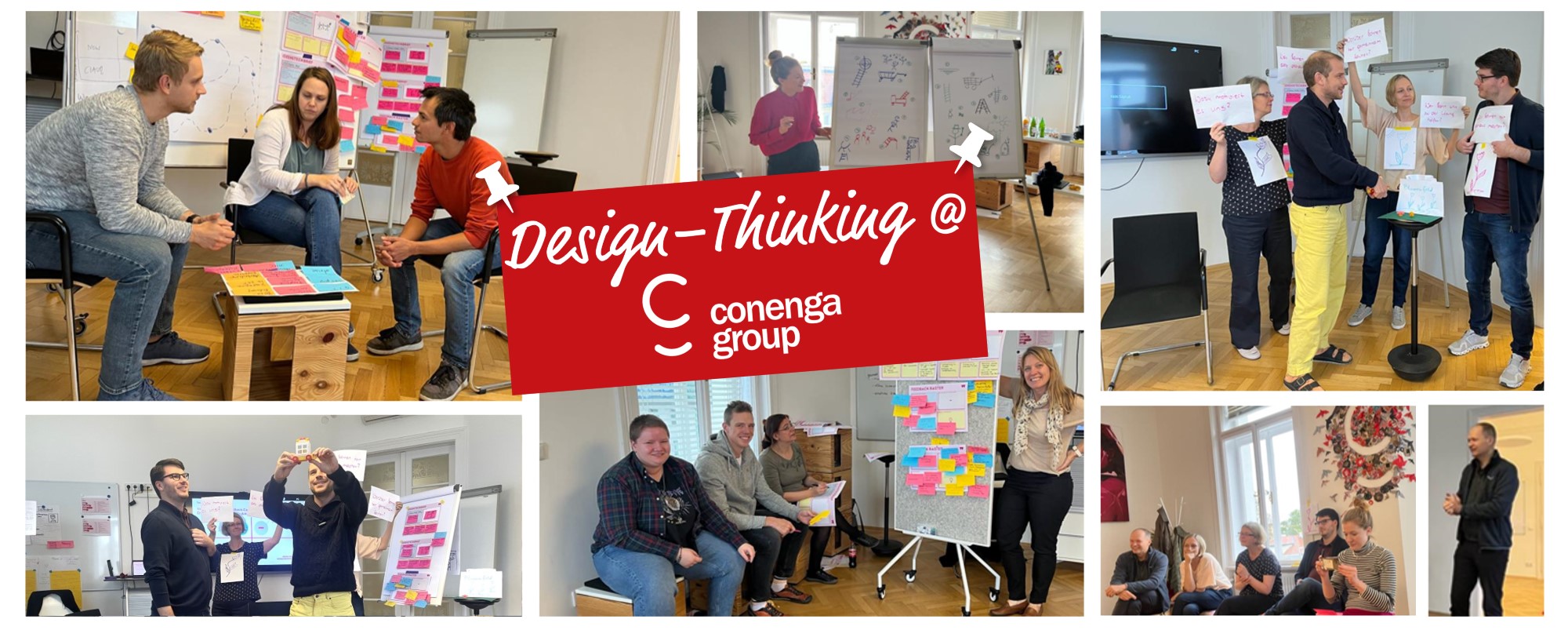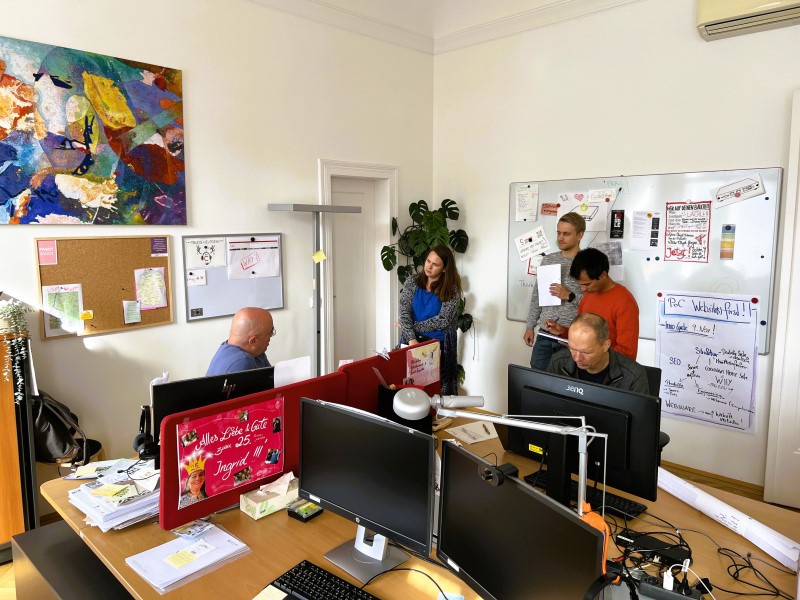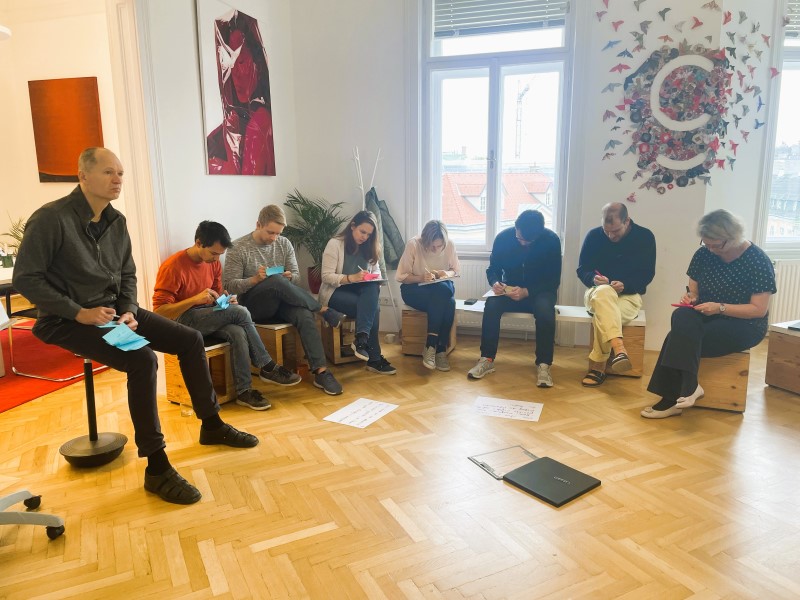Focusing on customer needs: design thinking in the CONENGA Group
Our top priority is to develop innovative and effective long-term solutions with our customers that focus on their needs. Design thinking is a promising approach here. In my role as Innovation Coordinator, I am always keen to support our team in expanding its toolbox of methods for devising and designing our innovation and development projects. That's why I organized a 2-day in-house training course with WONDERWERK Consulting, to which participants from various disciplines in our team were invited to learn the method step by step and "on the job".
The design thinking cycle in action
The training began with a comprehensive survey of the "problem space" and the development of a common understanding of the problem. We achieved this by formulating hypotheses on a specific issue, followed by developing a questionnaire and conducting short empathy interviews with representatively selected team members.
We were impressed by the effect that the choice and nature of the questions had on our interviewees. The attentive observation during our interviews and the subsequent analysis of the answers provided us with diverse and valuable insights. It was particularly astonishing how much we were able to learn about the views of our (internal) target groups in just five minutes.
In the next step, we created "personas", fictional characters that helped us to describe the actual users and take their perspective. In addition to demographic descriptions, we asked ourselves questions such as: "What needs does this persona have? What goals are they pursuing? What are their pain points and what makes them happy?". The insights we had previously gained from the interviews proved to be extremely helpful in this task and fostered a newfound understanding of our different target groups.
The "how-might-we" question then helped us to open up the space for user-centered ideas. The method requires skill, as the question should be precise enough to take previous findings into account, but open enough to allow for different approaches. With a little practice and the support of our experienced trainer, we managed this by the end of the first training day and were able to look forward to the idea generation and prototyping process the next day!
Start with the problem, not the solution
The second day opened with an exciting "paper clip test", in which we split into two teams and came up with as many original uses for paper clips as possible in a short space of time. And so our second workshop day began, full of creativity and fun. At this point, a big sorry to those who lost out in the big paper clip duel despite their impressive efforts, such as our esteemed colleague Johann Sauermann 😉.
In the ideation phase – based on the previously clearly defined problem – concrete ideas were developed with the help of creative techniques. By using "silent brainstorming" and the so-called "3-6-5 method", we were able to do this quickly and effortlessly. We were able to generate numerous ideas in a very short time, which we further developed and refined as a team.
The evaluation of our ideas using a feasibility/effectiveness matrix for each persona, followed by a description in so-called "idea profiles", was the basis for the highlight of the workshop:
The development of prototypes
Based on this, we went on to turn our ideas into tangible prototypes, which we presented to the large group. This was not only extremely entertaining, but also generated valuable feedback for further iterations. 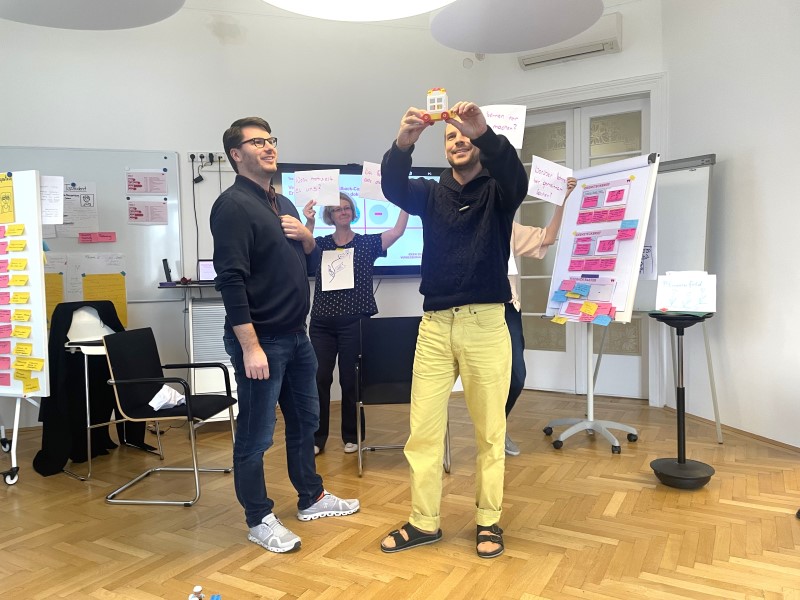 Fortunately, we did not have to put the newly learned slogan 'Kill your Darling' into practice to discard unusable prototypes. We are now looking forward with great anticipation to the imminent realization of our ideas!
Fortunately, we did not have to put the newly learned slogan 'Kill your Darling' into practice to discard unusable prototypes. We are now looking forward with great anticipation to the imminent realization of our ideas!
We would like to thank our trainer Isabella Gady, who taught us the method extremely professionally and successfully accompanied the training with a lot of humor. We left the workshop with an expanded toolbox for user-oriented solution development and look forward to incorporating this knowledge into our projects to meet customer needs. n even better!
